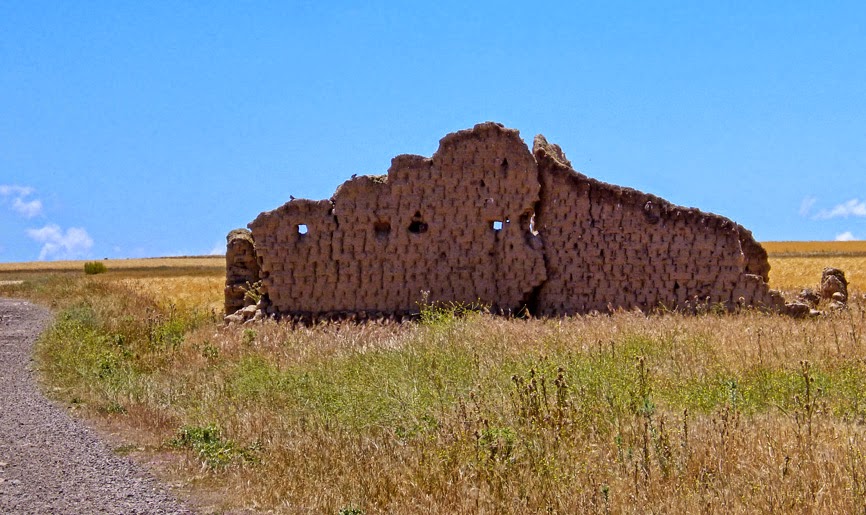I've
been busy organising a stand at the first Birdfair to be held in
Madrid next week. I got together a group of seven birding guides and
eleven rural hotels and cottages to share a stand under the name of
Goyarcyl: acronym in Spanish for Birding Guides and Rural
Accommodation Castilla y León. The crisis has been hitting
everybody hard so I reckoned that joining forces might be a good way
to get good publicity without crippling costs.
So
if you happen to be in Madrid between the 13th and 15th
June, check us out at the Madbird
fair.
Had
a walk the other day to see if I could spot the Black Vultures.
They're local and I'm hoping they might breed in the area. I didn't
see any signs of nesting but I did see thirteen Griffons and three
Black Vultures roosting in some Holm Oaks.
 |
| Two Black Vultures and one Griffon |
On
the way there were large gangs of juvenile Starlings, a Corn
Bunting and a Thekla lark unwilling to move away.
 |
| Thekla Lark |
 |
| Young Starlings |
 |
| Corn Bunting |
Sunday
morning I set out to try and find more Montague's and Hen Harriers.
As
there's an arable area just northeast of here I decided it would be a
good place to start. Sure enough, I saw a male Montague hunting just
next to a wheat field. A bit further on I saw a male Hen harrier
make several swoops into some yellow brooms, but he came away empty
clawed.
Unfortunately
I didn't see them with food, so was unable to establish if they were
breeding or not. I'll have to go back soon or any nests may run the
risk of disappearing: many of the fields have already been reaped,
and it won't be long before the others are too. Couldn't get a photo
of them, but there was an obliging Lesser Kestrel on a cable...
 |
| Lesser Kestrel |
There
were lots of Lesser Kestrels, Kestrels, Black and Red Kites and a
Short-toed eagle made an appearance.
Lots
of white storks too.























No comments:
Post a Comment